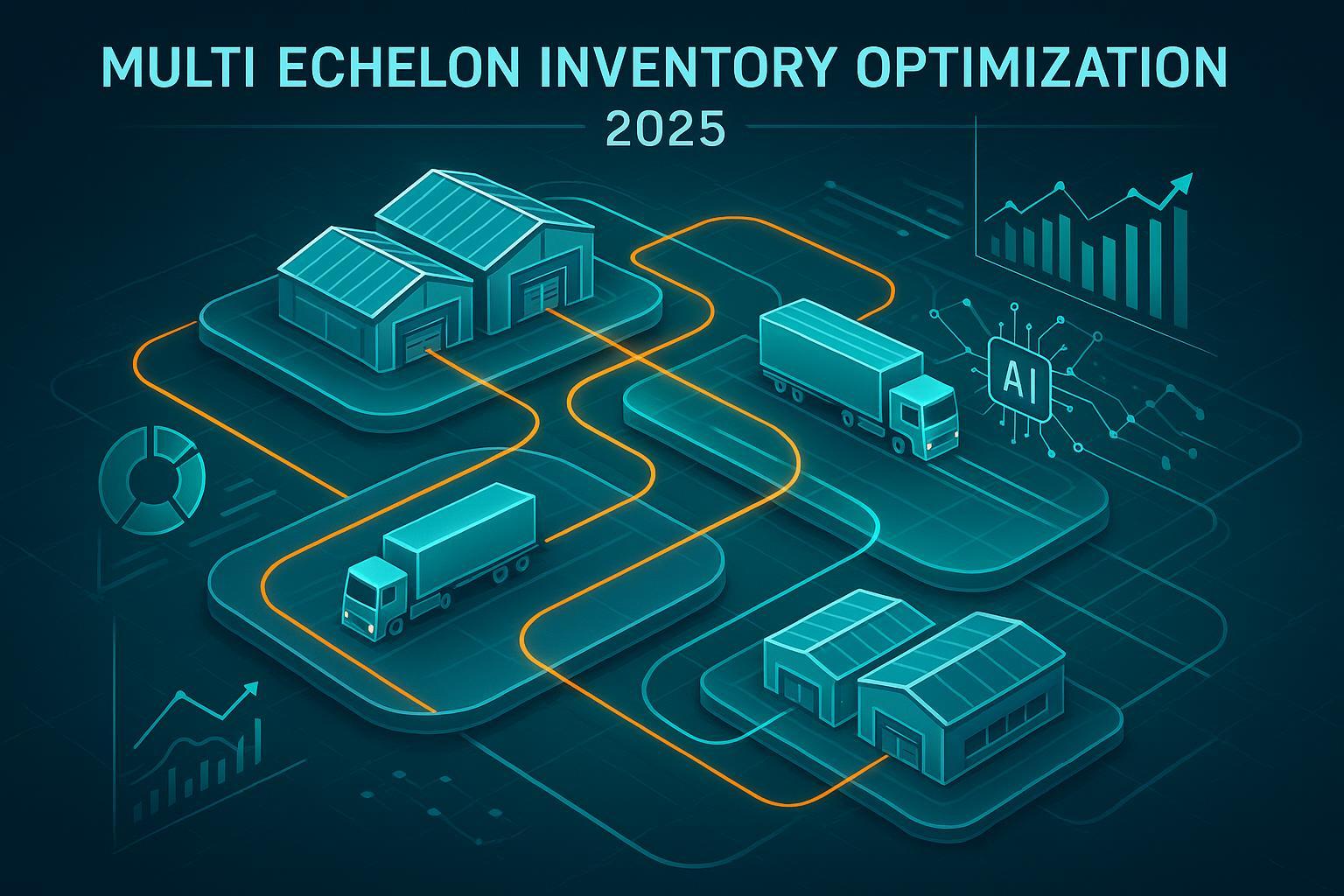
Introduction: Why 2025 Is a Pivotal Year for MEIO
As supply chain disruptions and market volatility persist, Multi Echelon Inventory Optimization (MEIO) stands at the forefront of innovation for 2025. This approach, which shifts inventory management from isolated nodes to a synchronized, tiered strategy, is no longer just cutting-edge—it's fast becoming the industry standard. According to the 2025 MHI Annual Industry Report, 55% of supply chain leaders are increasing tech investment, with 60% planning to spend over $1M and 19% committing above $10M. AI, ML, and IoT integration are driving both capital flows and strategic change, elevating MEIO from a theoretical concept to a measurable business advantage.
Technology Trends Defining MEIO in 2025
AI & Machine Learning: The Backbone of Modern Inventory Optimization
- Current Adoption: 28% of supply chain organizations are actively deploying AI today, with planned adoption expected to reach 82% by 2029 (MHI/Deloitte).
- Real Impact: AI in inventory optimization now delivers 20–50% reductions in holding costs and a 30% boost in stock-out/overstock balancing (ThroughPut.ai).
- Why It Matters: Predictive analytics and demand sensing underpin dynamic replenishment and automated decision-making at every echelon (IoT, cloud, sensors, and integrated platforms).
IoT and Standardization: Lowering Barriers, Expanding Reach
- Integration Rates Rising: The convergence of AI, ML, and IoT is making cross-tier visibility and collaboration possible at scale (IoTforall).
- Unified Platforms: Standardized protocols and cloud-first solutions, per McKinsey, are breaking down technical and organizational silos, enabling broader MEIO deployment even in traditionally resistant sectors (manufacturing, logistics, D2C).
Results & Adoption Data: The MEIO Payback
Case Studies in Action
- ThroughPut.ai: A leading CPG firm achieved a 27% cut in lead times via AI-driven demand sensing and replenishment.
- AI-Optimized Inventory Numbers: Companies adopting advanced MEIO strategies report 20–50% reduced inventory holding costs and 30% improvement in balancing stock-outs and overstock (ThroughPut.ai).
Sector-Wide Trends | Metric | Value | Source | |---------------------------------------------|------------|---------------------------------------------------------------------------------------------------------| | Supply chain leaders increasing tech spend | 55% | MHI/Deloitte 2025 Report | | Planned tech expenditures > $1M | 60% | MHI/Deloitte 2025 Report | | Current AI adoption in supply chain | 28% | MHI/Deloitte 2025 Report | | Planned AI adoption by 2029 | 82% | MHI/Deloitte 2025 Report | | Inventory holding cost reduction (AI/MEIO) | 20–50% | ThroughPut.ai | | Inventory balance improvement (AI/MEIO) | 30% | ThroughPut.ai |
Challenges to Scale: Barriers to MEIO Implementation
Despite rapid adoption rates, organizations face significant hurdles:
- Technical Debt & Data Silos: Immature tech and fragmented legacy systems present both a barrier and an opportunity (SCMR).
- Change Management & Skills Gap: Success is predicated not just on technology, but on harmonized IT environments and upskilled talent (MHI/Deloitte).
- Data Quality: Poor, inconsistent data and integration issues inhibit the value of AI/MEIO across tiers.
Roadmap for Practitioners: Actionable MEIO Playbook for 2025
For Supply Chain Leaders:
- Invest in Unified Platforms: Enable end-to-end visibility and cross-echelon collaboration.
- Prioritize Data Quality: Standardize, cleanse, and harmonize critical supply chain data.
- Upskill Workforce: Empower teams to leverage AI-driven analytics and autonomous decision support.
- Resilience Planning: Make MEIO a pillar of business continuity and risk management.
For eCommerce Managers:
- Leverage MEIO to Combat Volatility: Use dynamic demand sensing and automated replenishment to optimize service levels.
- Reduce Excess Stock: Use predictive analytics to align inventory with actual sales velocity and market conditions.
- Respond Rapidly to Demand Shifts: Implement cloud-driven MEIO tools that enable agility across channels.
Sustainability & Resilience: The Next Frontier
A growing number of MEIO deployments aim beyond cost efficiency—integrating sustainability and resilience as core objectives:
- Greener Logistics: Route and storage decisions now factor in emissions and energy consumption benchmarks (IoTforall).
- Resilient Structures: AI-powered MEIO is helping organizations absorb shocks from disruptions and drive circular supply chain models (McKinsey).
Action Recommendations: Your Next Moves for 2025
1. Audit Your MEIO Readiness: Use the latest checklists from leading consultancies to benchmark data, platforms, and skillsets. 2. Commit to Tech Investment: Given the rapidly shortening time-to-ROI, leaders should accelerate plans to deploy AI/MEIO platforms. 3. Build Sustainable Foundations: Align MEIO goals with environmental and resilience imperatives for long-term value. 4. Monitor Beyond 2025: Emerging research (MHI, McKinsey) indicates ongoing disruption and the need for adaptability as new technologies and standards arise.
Conclusion: The MEIO Opportunity—Transformation Awaits
2025 is the breakout year for Multi Echelon Inventory Optimization. Fueled by AI, ML, and IoT, MEIO is no longer a theoretical upgrade—it's a strategic necessity for any supply chain or eCommerce operator seeking resilience, sustainability, and measurable efficiency gains. With sector-wide adoption rising, the path forward lies in collaborative implementation, quality data, and a human-centric change strategy. Leaders who act now will not only keep pace—they’ll set the benchmark.
Further Reading and Resources: